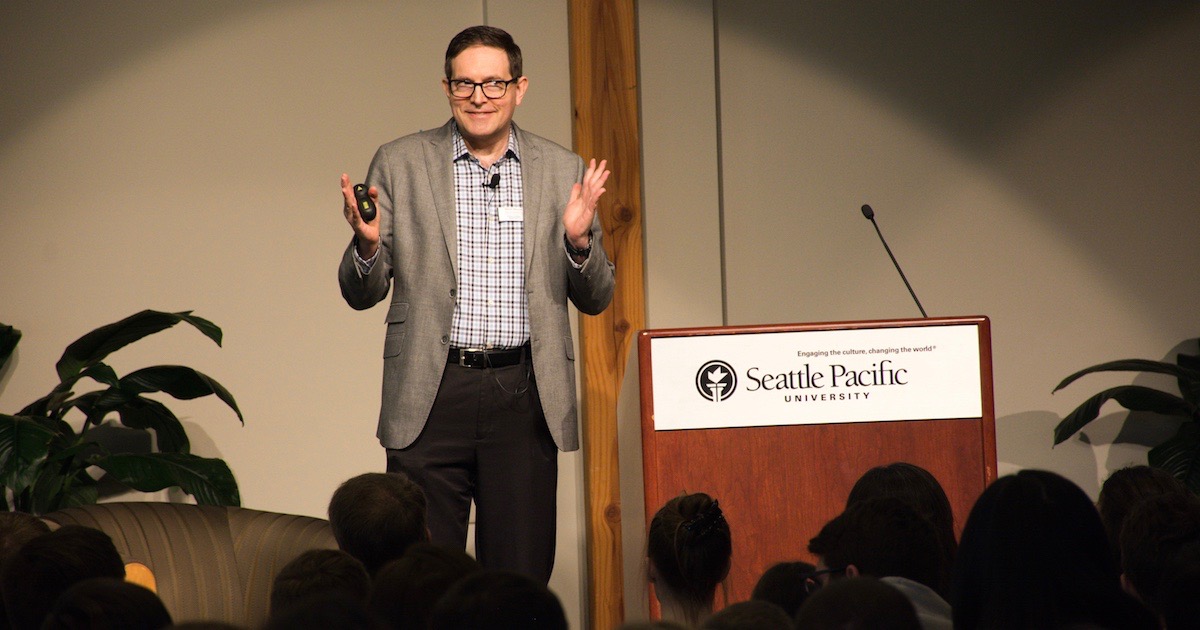 Evolution
Evolution
 Intelligent Design
Intelligent Design
The Intelligent Design Underground and Other Reflections

I joined Discovery Institute two years ago, but I had been reading the works of ID scientists since Michael Denton wrote Evolution: A Theory in Crisis in the mid Eighties. In the following decades, I spent countless hours reading intelligent design literature, and then the critiques of that literature, and then the responses to those critiques. I felt untold angst in seeing how the writings of design theorists were consistently misrepresented to the public and how design critics ignored the responses to their critiques’ errors. I longed for the day when I could help present the truth to the public.
Then, through a series of serendipitous (providential?) events, I was hired by Discovery Institute to serve as Research Coordinator for the Center for Science & Culture.
My first event as a staff member was attending the Royal Society meeting on new trends in evolutionary biology. The first speaker, who helped organize that conference, stated that the standard evolutionary model, commonly known as the “modern synthesis,” explains certain processes quite well such as the genetic variation in evolving populations.
But, he continued, it does not explain “complex levels of evolution” such as the origin of body plans, complex behaviors, complex physiology, development, and the fact that genetic variation is not equally distributed (e.g., variation only exists that can allow for minor adaptations). He even went on to say that the standard evolutionary model is not designed to address such large-scale transformations. The rest of the conference included talks on how various extensions to the theory could provide insight into how existing traits could undergo minor adjustments, but no one presented any concrete solution to the origin of complex innovations. I was truly struck by the stark contrast between what the public is usually told about the state of evolutionary theory and what increasing numbers of leading experts know to be true.
Tottering Pillars
In the past two years, I have seen major pillars supporting evolutionary theory dramatically shaken or begin to completely collapse:
- Rarity of proteins confirmed: Numerous studies have demonstrated that typical proteins found in nature represent sequences of amino acids that are so rare they could never be generated through evolutionary processes. In the past few years, challenges to this conclusion have been shown to be based on ignoring or misinterpreting key research (here, here, here, and here). As a consequence, familiar evolutionary claims — such as how cooption explains irreducible complexity and how undirected processes explain the origin of new body plans — appear increasingly implausible.
- Pattern of similarities: Similarities and differences among species are distributed across taxonomic groups in a pattern that is highly inconsistent with evolutionary expectations. As a result, any argument, based on similarities, for the creative capacity of evolution becomes highly suspect. Moreover, similarities (e.g., echolocation in bats and whales) appear to be distributed in a manner consistent with software programmers or engineers placing similar design modules in their different creations to meet similar goals.
- Genetic analysis of evolution: The most rigorous studies on the genetic basis for evolution demonstrate that most beneficial adaptations are the result of the degrading or the disabling of genes. Moreover, evolution is only capable of generating minor changes at the level of species and genera, not major ones at higher taxonomic levels (e.g., terrestrial mammal transforming into a whale).
The Design Intuition
Equally exciting, members of our scientific community have used the design intuition to guide their research. As a result, they have made several key discoveries that have been published or will soon be published in prominent research journals. Naturally, they have not directly connected their research to the conclusion of intelligent design — this is to avoid the inevitable censorship and other consequences that would have followed. Nevertheless, they have added to the growing body of knowledge pointing in that direction.
Despite these advances, the constant efforts by the public defenders of Darwin have prevented many in the public from learning the truth about the design debate. A classic example is critics appealing to the God-of-the-Gaps fallacy to dissuade their audience from even examining design arguments when, in fact, the truth is the exact opposite. I mean that, in their attempts to deny the increasing evidence for design in nature, mainstream scientists consistently fall into the materialism-of-the-gaps fallacy.
Such opposition turns my thoughts to Galileo’s astronomical observations discrediting the geocentric view of the world. Legends abound about how philosophers and theologians wedded to Aristotelean philosophy refused even to look through Galileo’s telescope to see the truth. These stories are somewhat mythical, but my experience has been that many scientists today refuse, either consciously or unconsciously, to allow themselves even to consider the possibility of design.
The Intelligent Design Underground
Despite these challenges, I have been struck by how our message has been spreading largely underground. A biologist in our network worked as a postdoctoral researcher at Harvard. He recounted how about a quarter of the postdocs he encountered were at least sympathetic to design arguments, but none were willing to acknowledge their support publicly due to the likely repercussions. In addition, increasing numbers of scientists who are not even philosophically open to the possibility of design are secretly dialoguing with our scientists. They have grown weary of their colleagues misrepresenting the state of evolutionary theory to the public, and they have become dismayed over how so many have misrepresented the strength of our arguments.
I have little doubt that the coming year will bring many new breakthroughs on the science front and in our efforts to present the truth to broader audiences. Please help us in freeing minds from materialist philosophical blinders and in spreading the evidence for design in nature. You can do so by contributing to our work here.
Photo: Dr. Brian Miller spoke to high school students at the 2018 ID Education Day.
